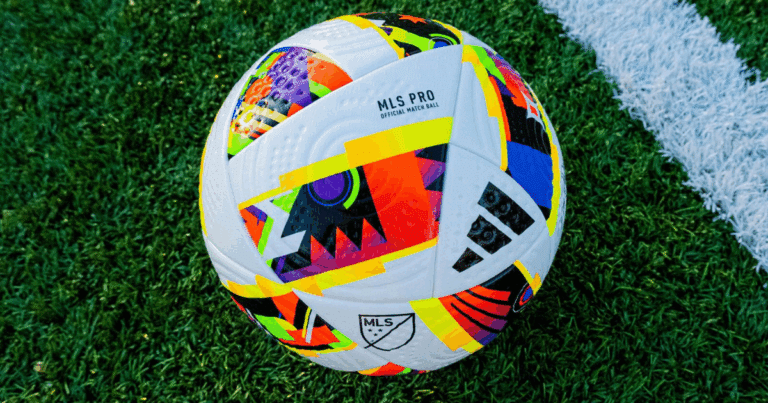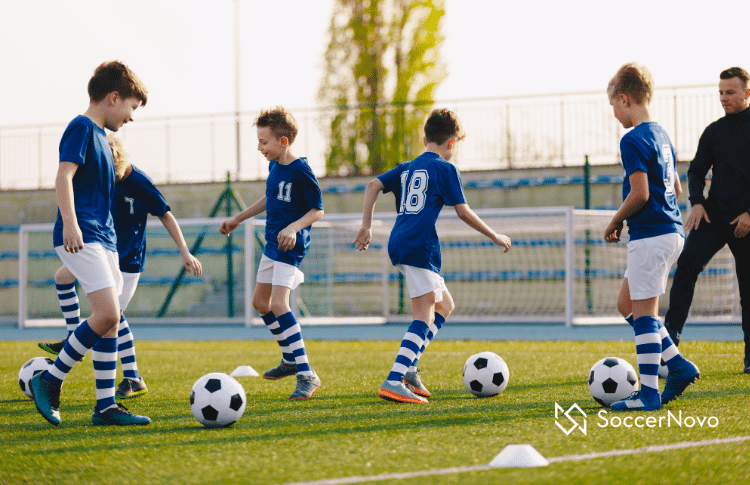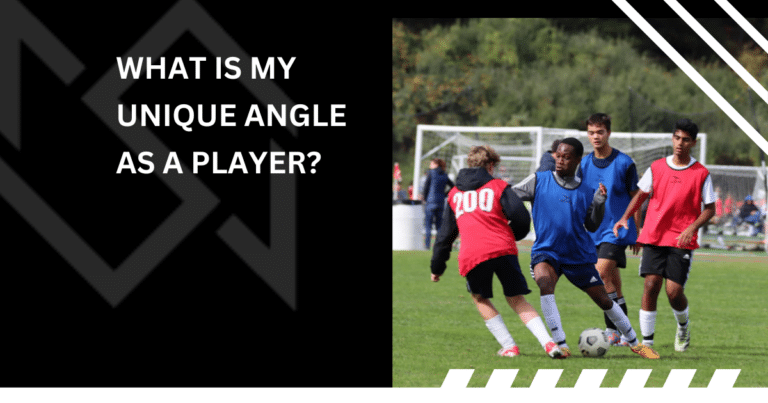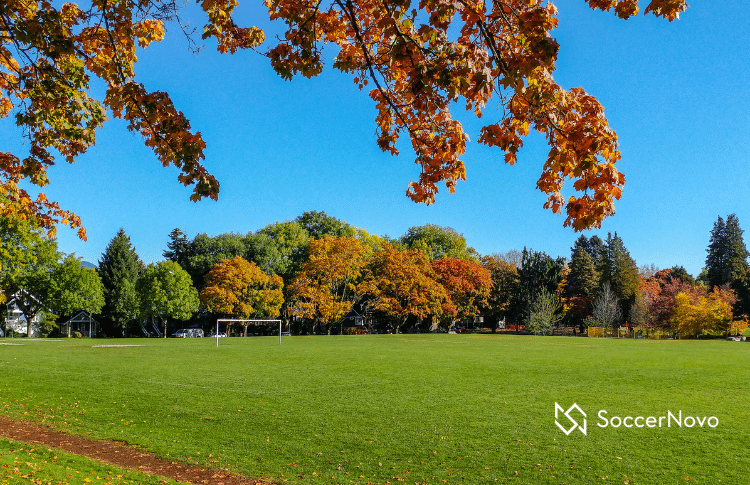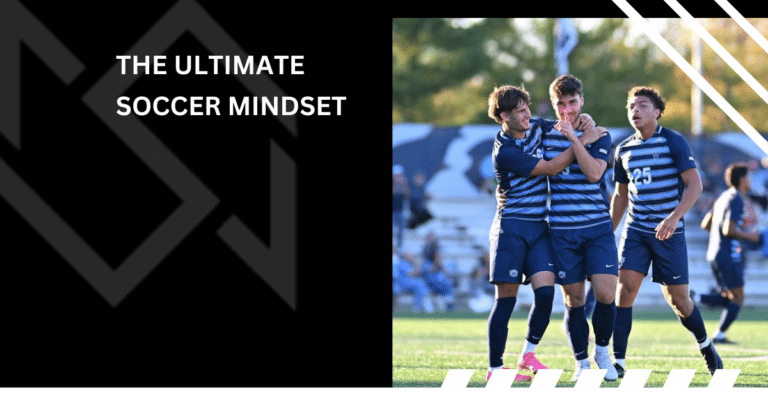Why Do My Calves Cramp When I Play Soccer?
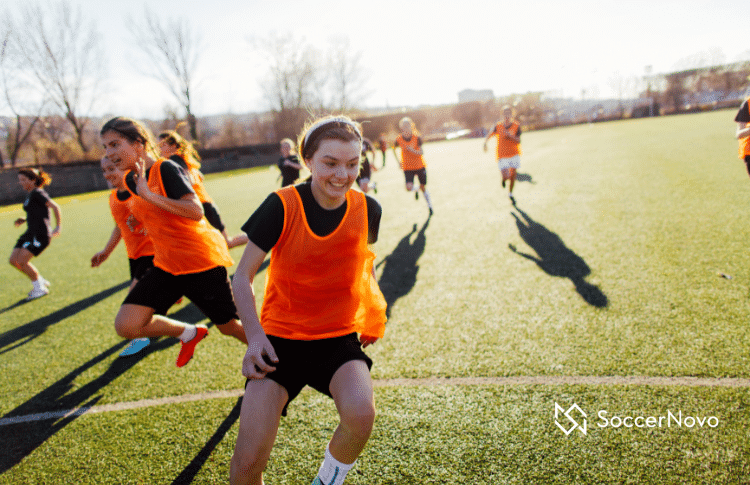
Calf or muscle cramps during a soccer game stink! There’s no denying this. These sudden, involuntary muscle contractions can be painful and frustrating. They may slow you down or even put you down.
In this article, we’ll explore why your calves camp up when you play and ways to prevent it from happening.
Before we begin, there are several potential culprits behind calf cramps in soccer players.
One common cause is overuse of the muscle, which can lead to fatigue and strain.
Additionally, dehydration and electrolyte imbalances may contribute to cramping, particularly if you’re sweating heavily during play.
Now, let’s dig into it some more…
What Causes Calf Cramps & How to Prevent Them
Several factors can cause calf cramps during soccer, including dehydration, electrolyte imbalance, overuse or strain, and poor conditioning.
Dehydration
Dehydration is a common cause of calf cramps during soccer. When you sweat excessively, you lose fluids and electrolytes, which can lead to muscle cramps.
To prevent dehydration, you should drink plenty of water before, during, and after playing soccer. You can also drink sports drinks that contain electrolytes like Gatorade or Powerade to replenish the minerals lost through sweating.
Electrolyte Imbalance
An electrolyte imbalance can also cause calf cramps during soccer. Electrolytes are minerals that help regulate muscle function, and when you have an imbalance, your muscles may contract involuntarily, leading to cramps.
To prevent an electrolyte imbalance, you should eat a balanced diet that includes foods rich in potassium, sodium, and magnesium. You can also take electrolyte supplements if necessary.
Overuse or Strain
Nowadays, many kids play soccer year-round. Overuse or strain of the calf muscles can also cause cramps during soccer.
When you play soccer, you use your calf muscles extensively, and if you do not stretch or warm up properly, you may strain your muscles, leading to cramps.
To prevent overuse or strain, you should stretch and warm up before playing soccer, and you should also take breaks and rest your muscles when necessary.
Poor Conditioning
Poor conditioning is another factor that can cause calf cramps during soccer. If your calf muscles are not strong enough, they may fatigue quickly, leading to muscle cramps. Or, even worse, you could cause long-term injuries.
To improve your conditioning, you should incorporate calf-strengthening exercises into your training routine, such as calf raises, squats, and lunges. You should also gradually increase the intensity of your training to avoid overuse or strain.
What to Do When You Experience Calf Cramps
Stop Playing and Rest
If you experience a calf cramp during a soccer game or practice, it’s important to stop playing immediately and rest.
Continuing to play can exacerbate the cramp and cause further damage to the muscle. Resting allows the muscle to relax and reduces the risk of additional cramps.
Stretching and Massage
Stretching and massages can help alleviate the symptoms of calf cramps. Gently stretching the affected muscle can help relieve the tension and reduce the pain.
Additionally, massaging the muscle can help increase blood flow to the area and reduce the risk of further cramping.
You can also use a massage gun to ease the tension of the muscles. The gun delivers rapid bursts of pressure into the muscle tissue.
Rehydration and Electrolyte Replacement
As we mentioned above, dehydration and electrolyte imbalances can contribute to calf cramps.
To prevent cramping, make sure to drink plenty of fluids before, during, and after playing soccer. Additionally, consuming electrolyte-rich beverages or foods can help replace lost electrolytes and reduce the risk of cramping.
Consultation with a Doctor
Most muscle cramps can be handled on your own. But, if you experience frequent or severe calf cramps while playing soccer, it’s essential to consult with a doctor.
They can help determine the underlying cause of the cramps and recommend appropriate treatment options. In some cases, medication or physical therapy may be necessary to alleviate the symptoms and prevent further cramping.
Conclusion
In conclusion, experiencing calf cramps during soccer can be a frustrating and painful experience. However, there are steps you can take to prevent and manage these cramps.
Firstly, make sure you are properly hydrated before, during, and after playing soccer. Dehydration can lead to muscle cramps, so it’s important to drink plenty of fluids.
Additionally, make sure you are properly warmed up and stretched before playing to prevent muscle fatigue and strain.
If you do experience a cramp during play, stop immediately and gently stretch and massage the affected muscle. Applying heat or cold to the area may also help alleviate the pain and discomfort.
It’s important to note that if you experience frequent or severe cramping, you should consult your doctor to rule out any underlying medical conditions.
It’s essential to handle your body with care and give it a lot of attention. As a soccer player, the health and vitality of your body make a huge difference on the field. So treat it like your best friend!

Written By: SoccerNovo
SoccerNovo is an independent youth soccer media brand built to help parents, players, and coaches better understand the game and the pathways available in U.S. soccer. Our mission is to make youth soccer simpler, clearer, and more accessible for everyone involved in it.
Let’s connect



